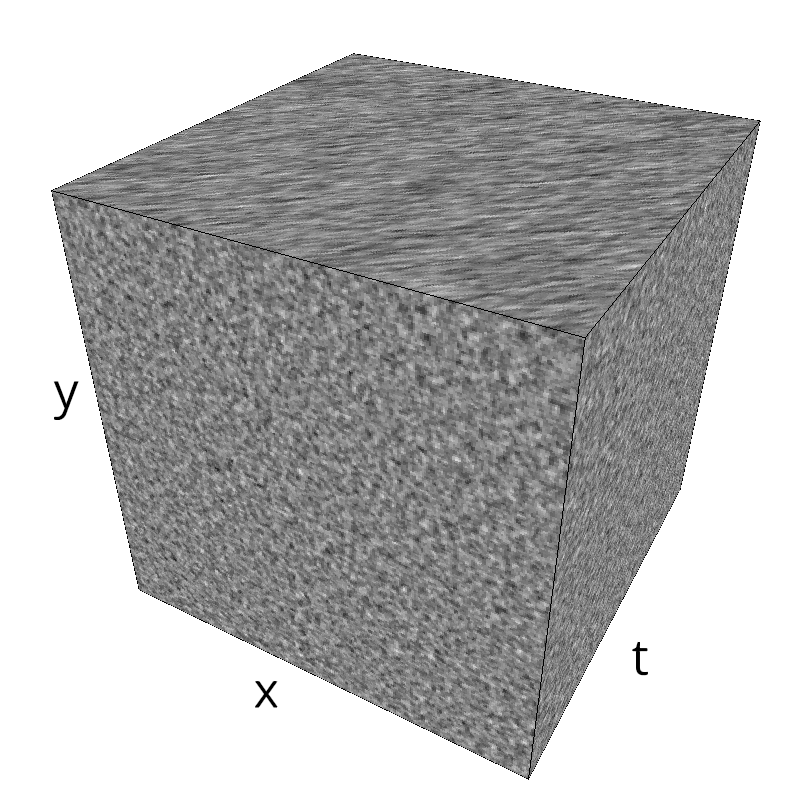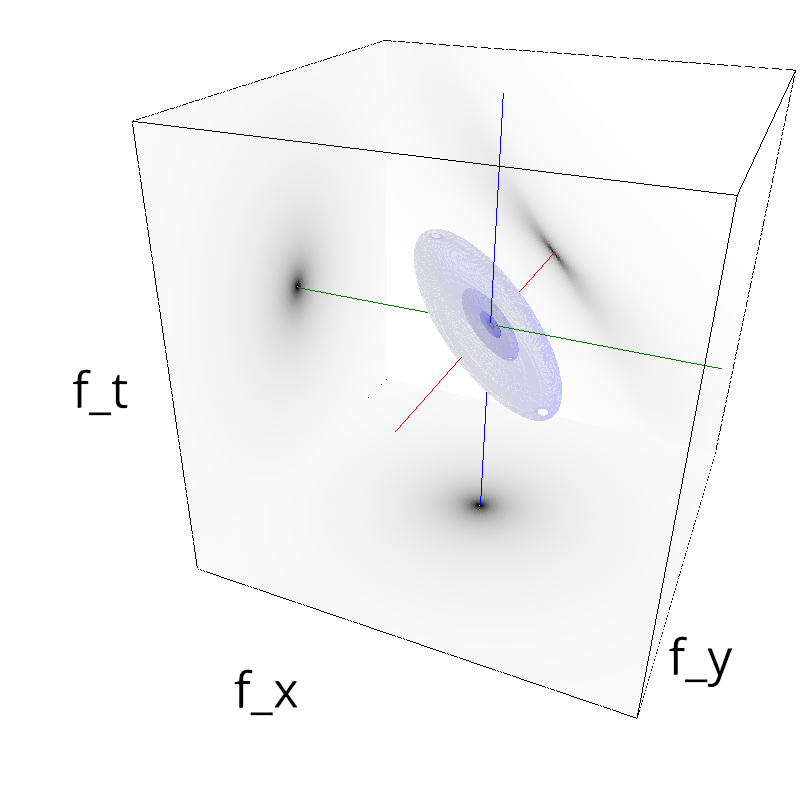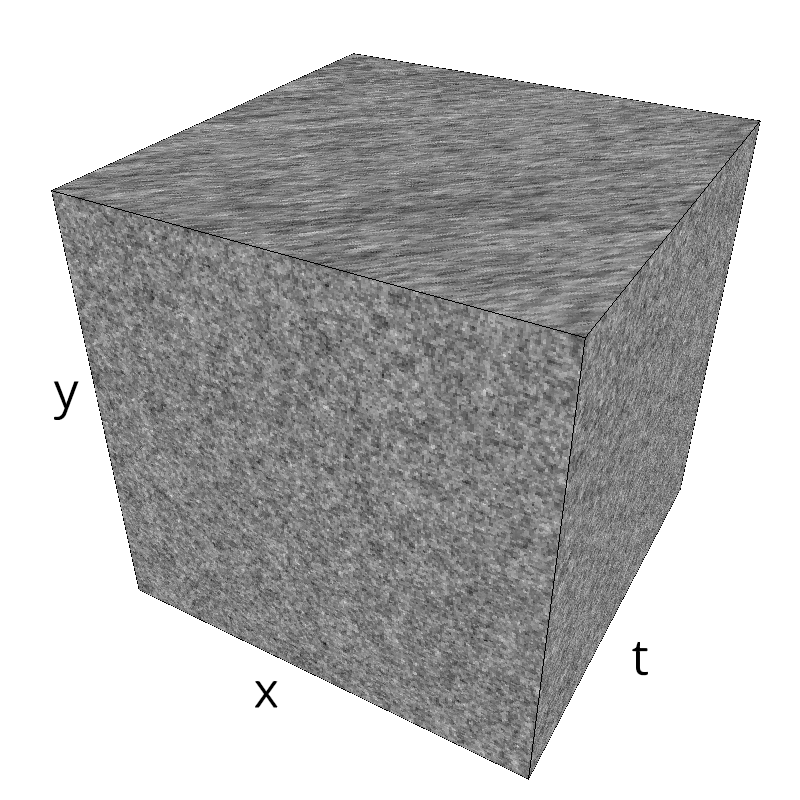More is not always better
MotionClouds¶
MotionClouds are random dynamic stimuli optimized to study motion perception.
Notably, this method was used in the following paper:
- Claudio Simoncini, Laurent U. Perrinet, Anna Montagnini, Pascal Mamassian, Guillaume S. Masson. More is not always better: dissociation between perception and action explained by adaptive gain control. Nature Neuroscience, 2012 URL
In this notebook, we describe the scripts used to generate such stimuli.
In [1]:
%%writefile ../files/experiment_B_sf.py
#!/usr/bin/env python
"""
Testing different spatial frequency bandwidths
(c) Laurent Perrinet - INT/CNRS
This is the basis for the following paper:
Claudio Simoncini, Laurent U. Perrinet, Anna Montagnini, Pascal Mamassian, Guillaume S. Masson.
More is not always better: dissociation between perception and action explained by adaptive gain control.
Nature Neuroscience, 2012.
https://laurentperrinet.github.io/publication/simoncini-12
"""
import MotionClouds as mc
mc.figpath = '../files/'
import numpy as np
name = 'Simoncini12'
DEBUG = False
# uncomment to preview movies
#ext, display = None, True
#initialize
fx, fy, ft = mc.get_grids(mc.N_X, mc.N_Y, mc.N_frame)
# explore parameters
for B_sf in [0.025, 0.05, 0.1, 0.2, 0.4, 0.8]:
name_ = name + '-B_sf' + str(B_sf).replace('.', '_')
z = mc.envelope_gabor(fx, fy, ft, B_sf=B_sf, B_theta=np.inf, alpha=1.)
mc.figures(z, name_)
mc.in_show_video(name_)
if DEBUG: # control enveloppe's shape
z_low = mc.envelope_gabor(fx, fy, ft, B_sf=0.037, loggabor=False)
z_high = mc.envelope_gabor(fx, fy, ft, B_sf=0.15, loggabor=False)
import pylab, numpy
pylab.clf()
fig = pylab.figure(figsize=(12, 12))
a1 = fig.add_subplot(111)
a1.contour(numpy.fliplr(z_low[:mc.N_X/2, mc.N_Y/2, mc.N_frame/2:].T), [z_low.max()*.5], colors='red')
a1.contour(numpy.fliplr(z_high[:mc.N_X/2, mc.N_Y/2, mc.N_frame/2:].T), [z_high.max()*.5], colors='blue')
a1.set_xlabel('spatial frequency')
a1.set_ylabel('temporal frequency')
fig.savefig(mc.figpath + name + '_envelope_overlap.pdf')
if DEBUG:
# checking for different frequencies
for sf_0 in [0.1 , 0.2, 0.3, 0.8]:
name_ = name + '-sf_0' + str(sf_0).replace('.', '_')
z = mc.envelope_gabor(fx, fy, ft, sf_0=sf_0, alpha=1.)
mc.figures(z, name_)
mc.in_show_video(name_)
# explore different speeds than (V_X = 1, V_Y =0)
for V_X in [1./4, 1./2 , 1. , 2.0]:
name_ = name + '-V_X' + str(V_X).replace('.', '_')
z = mc.envelope_gabor(fx, fy, ft, V_X=V_X, alpha=1.)
mc.visualize(z, name=name_)
mc.anim_save(mc.rectif(mc.random_cloud(z)), name_)
for V_Y in [0.5 , 1.0 , 2.0]:
name_ = name + '-V_Y' + str(V_Y).replace('.', '_')
z = mc.envelope_gabor(fx, fy, ft , V_Y=V_Y)
mc.figures(z, name_)
mc.in_show_video(name_)
# same stimulus but with different seeds
for seed in [123456, 123457, 123458, 123459]:
name_ = name + '-seed' + str(seed)
z = mc.rectif(mc.random_cloud(mc.envelope_gabor(fx, fy, ft), seed=seed, alpha=1.))
mc.figures(z, name_)
mc.in_show_video(name_)
# checking for different frequencies
for sf_0 in [0.1 , 0.2, 0.3, 0.8]:
for B_sf in [0.025, 0.05, 0.1, 0.2, 0.4, 0.8]:
name_ = name + '-sf_0' + str(sf_0).replace('.', '_') + '-B_sf' + str(B_sf).replace('.', '_')
z = mc.envelope_gabor(fx, fy, ft, sf_0=sf_0, B_sf=B_sf, alpha=1.)
mc.figures(z, name_)
mc.in_show_video(name_)
In [2]:
%run ../files/experiment_B_sf.py











